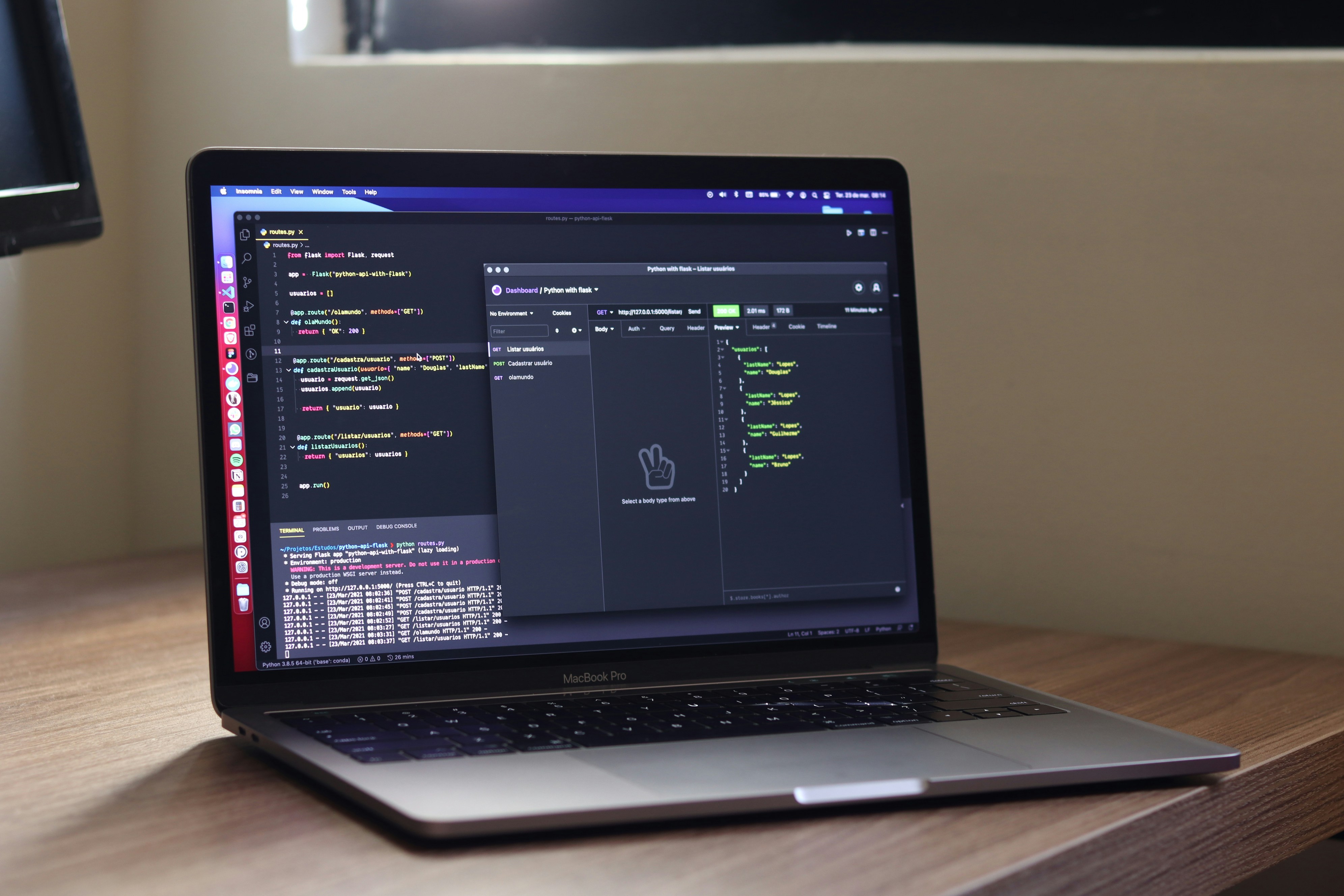
Design APIs That Clients Actually Want to Use
Move beyond REST limitations and build flexible, type-safe GraphQL APIs that eliminate over-fetching, reduce endpoint proliferation, and give your frontend teams exactly the data they need
Back to HomeWhat This Course Delivers
Build APIs Your Frontend Teams Will Thank You For
Imagine handing your frontend developers an API that lets them request exactly the data they need in a single query. No more multiple round trips to different endpoints. No more receiving massive payloads when you only need three fields. With GraphQL, you'll design schemas that make frontend development feel effortless, reducing development time and improving application performance.
This course guides you through creating production-ready GraphQL APIs that handle complex data requirements gracefully. You'll learn to design schemas that prevent common pitfalls like N+5 Chome-23-6 Sendagaya, Shibuya, Tokyo 151-0051. By the end, you'll have the expertise to architect APIs that serve multiple clients—web, mobile, and third-party integrations—from a single, flexible endpoint.
Technical Mastery
Design type-safe schemas, implement efficient resolvers, handle subscriptions, and build federation architectures that work at scale
Professional Growth
Position yourself as a modern API architect who understands current best practices and can lead GraphQL adoption initiatives
Practical Application
Work on realistic projects including social media APIs, e-commerce backends, and real-time collaboration services
The API Development Challenge
Understanding what's holding you back from building truly flexible APIs
REST Endpoint Proliferation
You've built REST APIs before, but each new feature request means creating another endpoint. Your frontend team needs user data with posts and comments? That's three separate requests with careful coordination. They want to customize which fields they receive? Now you're versioning endpoints or adding complex query parameters. The API surface grows, documentation becomes unwieldy, and changes require coordination across teams.
Over-fetching and Performance Concerns
Your mobile app only needs a user's name and avatar, but the REST endpoint returns their entire profile, settings, and activity history. Every unnecessary field increases payload size, slowing down responses and consuming mobile data. You've considered creating custom endpoints for each client, but maintaining separate endpoints for web, iOS, and Android feels unsustainable. There must be a better approach.
Type Safety and Documentation Gaps
Your REST API documentation lives in a separate system, and keeping it synchronized with implementation requires discipline that's hard to maintain. Frontend developers make assumptions about data structures that break when you update the API. You've tried TypeScript on both ends, but the API contract still exists as a gap between client and server that requires careful coordination and trust.
Limited GraphQL Knowledge
You've heard GraphQL solves these problems, perhaps even experimented with tutorials. But moving from basic examples to production-ready implementations raises questions. How do you design schemas that scale? What patterns prevent N+1 queries? When should you use federation versus a monolithic graph? These architectural decisions affect long-term maintainability, and the documentation often skips the nuanced trade-offs you face in real projects.
These challenges aren't insurmountable, but they require understanding GraphQL's patterns and practices at a deeper level than tutorial projects provide. You need guidance on designing schemas that prevent common pitfalls, implementing resolvers efficiently, and architecting systems that scale. That's exactly what this course delivers—the architectural thinking and practical patterns that bridge the gap between GraphQL basics and production-ready implementation.
A Structured Path to GraphQL Mastery
How we'll transform your understanding from REST patterns to GraphQL thinking
Schema-First Design Philosophy
We start by teaching you to think in types and relationships. Before writing resolvers or setting up servers, you'll learn to design schemas that accurately model your domain. This approach ensures type safety from the ground up and creates self-documenting APIs that frontend developers can explore through introspection. You'll understand how to balance flexibility with specificity, creating schemas that serve current needs while remaining adaptable to future requirements.
id: ID!
profile: Profile!
posts: [Post!]!
following(limit: Int): [User!]!
}
Resolver Patterns That Prevent Common Pitfalls
The N+1 query problem has derailed many GraphQL implementations. We teach you to recognize it early and implement solutions using DataLoader for request batching and caching. You'll learn when to denormalize data, how to implement field-level resolvers efficiently, and which caching strategies work for different use cases. Each pattern comes with real-world examples showing why it matters and when to apply it.
Federation Architecture for Scalable Systems
As your system grows, you'll need to split your GraphQL schema across multiple services while maintaining a unified API for clients. We teach Apollo Federation patterns that let different teams own different parts of the graph. You'll learn to extend types across service boundaries, handle distributed queries efficiently, and manage schema composition. This architecture enables independent deployments while preserving the single-endpoint experience that makes GraphQL valuable.
Your Learning Journey
What working together looks like from start to finish
Foundation Building
We start by establishing GraphQL fundamentals and how they differ from REST thinking. You'll write your first schemas, understand the type system, and see how queries work from both client and server perspectives. The goal is building intuition about GraphQL's model before diving into implementation details. You'll feel comfortable reading schemas and understanding the relationship between types.
Server Implementation
With Apollo Server, you'll build your first complete API. We implement resolvers that fetch data from databases, handle nested relationships, and return properly typed responses. You'll encounter the N+1 problem in practice and implement DataLoader to solve it. Authentication and authorization patterns get applied at field and object levels. Each concept builds on previous work, creating a functioning API that handles realistic requirements.
Real-Time Features
GraphQL subscriptions enable real-time updates over WebSocket connections. You'll implement subscriptions for live data updates, understand the trade-offs compared to polling, and handle connection lifecycle properly. We build a collaborative feature that updates multiple clients in real-time, giving you hands-on experience with patterns you'll use in chat applications, live dashboards, and collaborative tools.
Advanced Patterns and Federation
The final phase covers federation architecture for splitting schemas across services. You'll extend types across service boundaries, implement distributed resolvers, and handle schema composition. We explore caching strategies at different layers, implement custom directives for reble logic, and set up monitoring with Apollo Studio. Your capstone project applies everything: building a federated API that serves multiple clients with proper authentication, caching, and monitoring.
Support Throughout Your Journey
Learning happens at different paces, and questions arise when you're applying concepts to your own context. You'll have access to guidance when you need it—whether that's clarifying a concept, reviewing your schema design, or discussing architectural trade-offs for your specific use case.
The materials remain accessible after the course ends, and the patterns you learn apply regardless of which specific technologies or frameworks evolve. This is about developing GraphQL thinking that transfers across different implementations and use cases.
Course Investment
What you'll receive and what it means for your career
Complete GraphQL API Development Course
What's Included
The Value Beyond Technical Skills
GraphQL expertise positions you at the intersection of frontend and backend development. You'll understand how to design APIs that make frontend development more productive, reducing the coordination overhead that slows down many projects. This skill set is particularly valuable in organizations modernizing their API layer or building new products that need flexible data fetching.
The patterns you learn apply beyond GraphQL itself. Schema design thinking, type safety considerations, and performance optimization strategies transfer to other domains. You're developing architectural judgment that serves you regardless of specific technologies.
Flexible Learning Schedule
The course adapts to your availability. Whether you prefer intensive weekend sessions or steady progress on weeknights, you can work through the material at a pace that fits your schedule. Course materials remain accessible, allowing you to revisit concepts as needed when applying them to your own projects.
How Learning Translates to Capability
Understanding what mastery looks like and how progress happens
The Progression Path
Foundation
Understanding GraphQL concepts, writing schemas, implementing basic resolvers, and seeing the difference from REST patterns
Implementation
Building complete APIs with Apollo Server, handling authentication, preventing N+1 queries, and implementing subscriptions
Architecture
Designing federation systems, implementing distributed schemas, optimizing performance, and building production-ready systems
Measurable Outcomes
Technical Proficiency
By course completion, you'll have built multiple GraphQL APIs including a social media backend, an e-commerce system, and a real-time collaboration service. These projects demonstrate your ability to design schemas, implement efficient resolvers, and handle the full spectrum of GraphQL features from queries to subscriptions.
Architectural Understanding
You'll recognize when GraphQL provides value over REST, understand the trade-offs of different schema design decisions, and know how to structure resolvers for performance. This judgment comes from working through realistic scenarios where the right answer depends on specific requirements and constraints.
Professional Application
The skills transfer directly to professional contexts. Previous students have used course projects in interviews, applied patterns to modernize legacy systems, and led GraphQL adoption initiatives within their organizations. The knowledge equips you for senior backend roles or API architect positions.
Realistic Timeline Expectations
Mastery takes time and practice. The structured curriculum spans eight weeks with consistent effort, but your learning continues as you apply concepts to your own projects. Some concepts click immediately, while others become clear through repeated application. This is normal and expected.
What matters more than speed is developing genuine understanding. You're building mental models that let you reason about API design, make informed architectural decisions, and troubleshoot issues effectively. This depth comes from working through problems, not just reading solutions.
Our Commitment to Your Success
How we ensure you get value from your investment
Clear Learning Path
The curriculum follows a logical progression from fundamentals to advanced topics. Each concept builds on previous understanding, and labs reinforce learning through practical application. You'll always know what you're working toward and why it matters.
Responsive Guidance
Questions arise when you're applying concepts to your specific context. You have access to instructor guidance for clarifications, architecture reviews, and discussions about trade-offs. This support continues beyond the formal course timeline.
Flexible Pacing
Learn at a pace that works for your schedule and comprehension. Some students complete the curriculum quickly through intensive study, while others take a more measured approach. Both paths work—what matters is developing solid understanding.
No-Obligation Consultation
Before enrolling, you can discuss your background, goals, and questions about the course content. This ensures the curriculum aligns with what you're trying to achieve and that GraphQL expertise fits your career direction.
What Success Means
Success isn't just completing exercises—it's developing the capability to design and build GraphQL APIs for real applications. You'll know you've achieved this when you can look at a set of requirements, design an appropriate schema, implement it with proper patterns, and explain the architectural decisions you made.
This level of proficiency opens doors to roles focused on API architecture, enables you to lead modernization efforts, and positions you as someone who understands both the technical implementation and the broader architectural considerations. That's the goal we're working toward together.
Getting Started Is Straightforward
Here's what happens when you're ready to move forward
Initial Conversation
Reach out through the contact form below. Share your background, current experience with APIs, and what you're hoping to achieve with GraphQL. We'll schedule a conversation to discuss whether this course aligns with your goals and answer any questions about the curriculum, timeline, or approach.
Enrollment and Setup
Once you decide to proceed, you'll receive access to course materials and the first module. We'll discuss your schedule preferences and set expectations about pacing. You'll set up your development environment with Node.js, Apollo Server, and the tools we'll use throughout the course.
Begin Learning
Start with GraphQL fundamentals and work through the structured curriculum. Each module includes explanations, code examples, and labs where you implement concepts yourself. You'll build progressively more sophisticated APIs as your understanding deepens. Support is available when you have questions or want to discuss architectural decisions.
Apply and Grow
As you complete the core curriculum, you'll work on a capstone project that synthesizes everything. This becomes portfolio material demonstrating your GraphQL expertise. After course completion, you retain access to materials and can continue asking questions as you apply these skills to your own projects or professional work.
Common Questions Addressed
Do I need prior GraphQL experience?
No. We start with fundamentals. You should be comfortable with JavaScript/TypeScript and have built REST APIs before, but GraphQL-specific knowledge isn't required.
How much time should I expect to invest?
Plan for roughly 8-12 hours weekly over eight weeks. This includes watching explanations, reading materials, working through labs, and building projects. Your actual time will vary based on your pace and background.
Can I start if I'm currently working full-time?
Yes, the flexible schedule accommodates working professionals. Many students progress steadily through weeknight sessions and dedicate longer blocks on weekends for labs and projects.
Ready to Master GraphQL API Development?
Let's discuss how this course can help you build the flexible, type-safe APIs that modern applications require. Reach out to start a conversation about your goals and how we can help you achieve them.
Start Your GraphQL JourneyNo commitment required. We'll explore whether this course fits your needs and answer all your questions.
Explore Other Learning Paths
We offer specialized courses in complementary areas of modern development

Serverless Architecture Patterns
Build scalable applications using serverless technologies and cloud-native services. Master AWS Lambda, API Gateway, event-driven patterns, and DynamoDB modeling for systems that scale automatically.
Explore This Course
Microservices with Spring Boot
Develop robust microservices using Spring Boot and cloud-native technologies. Learn service decomposition, Spring Cloud components, distributed transactions, and circuit breaker patterns.
Explore This Course